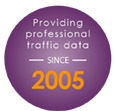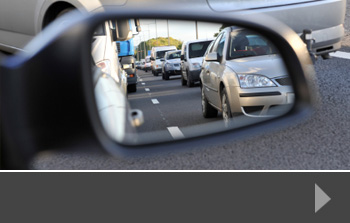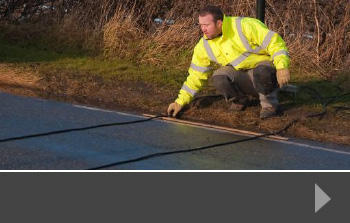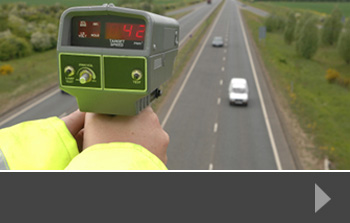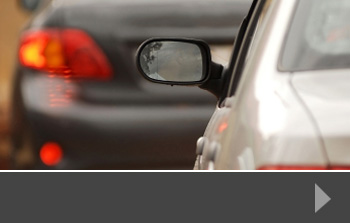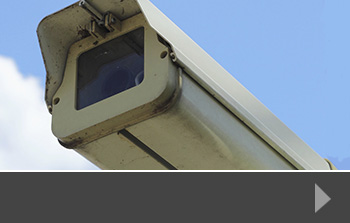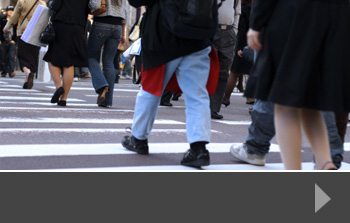Will new housebuilding plans have knock-on effect on traffic congestion?
On July 25th, Levelling Up Secretary, Michael Gove, announced an update to the government’s housing plans. These included relaxing planning rules in England, to encourage developers to build more homes in cities – utilising existing commercial buildings that are no longer used, such as takeaways and retail premises.
The idea of these changes is to create what Mr Gove called, ‘walkable, liveable communities’ – populated urban areas where people have an easier commute to work and where services are all easily accessible. But in reality, will converting city buildings to housing bring more cars into the area and increase congestion?
The demand for housing
The government’s manifesto pledge on housing was to build 300,000 new homes per year. This is a target it has missed, building around 233,000 new homes in 2021/22, but with estimates suggesting England actually needs 344,000 homes each year, of which around 145,000 should be affordable, we re currently in a housing deficit.
The government is focusing on regenerating cities – partly because there are certainly buildings in cities that should be reused for residential purposes wherever possible, but also because the government wants to avoid the unpopularity of building on brownfield and greenfield sites.
But one of the key considerations in any building development is whether it will bring new vehicles to the target area.
Housing and congestion
It’s certainly the case that our cities are suffering from a housing shortage. According to CentreForCities.org, places like London, Brighton, York and Bristol need more housing – and smaller, often expensive cities like Oxford build fewer houses than their population needs.
In most cases, building new houses – and even repurposing commercial buildings for residential use – is going to increase the amount of traffic on the roads. Even if the homeowner doesn’t have a car, they will have visitors and they will order deliveries – around two-thirds of our shopping, including groceries, is now done online.
But people will have cars, and that will put pressure on parking, on traffic numbers and on air pollution.
Traffic surveys from RDS
At RDS, we work with planners and developers to look at the current state of traffic, parking, congestion and journey times in specific areas. This helps our clients to create a benchmark from which they can assess and predict the impact of any future development. This is a complex area – while there might be more cars on the road because of a development, if public transport is improving and plans to encourage more cycling and walking to work are good, then the impact may be negligible. The answer is to start with precise data that allows you to plan ahead – and that’s where we can help.
As traffic survey specialists, much of our work is carried out in urban settings. Both developers and planners want to make the best possible use of the existing road network, and plan new roads that help traffic flow.
But easing congestion in urban areas is a tricky problem. While there are certainly more public transport options in urban environments, there’s also more traffic in general – both commercial and individual. This often results in congestion problems, which in turn increases air pollution, adds to journey times and frustrates travellers.
What are the problems?
Despite efforts by local and national governments to reduce the amount of traffic on our roads, predictions are that traffic will increase in urban areas over the next 20-30 years. Of course, some places are more advanced than others – cities like Amsterdam, for example, began reducing the amount of traffic across the city in the 1970s. And, if you’re on social media, you may have seen the videos of increased numbers of cyclists in Paris as the city introduces more bike lanes and bike parking.
But in many cases, planners are working with old road networks, limited budgets and public opinion. Problems include old infrastructure, travelling habits, road connections and the sheer cost and time needed to transform urban areas for better traffic management.
What is the answer?
There is, of course, no single answer to this problem. Each urban area will have its own challenges and be working within its own budgetary and time constraints. According to McKinsey and Company, writing earlier this year, there are three trends that are shaping the way we think about the urban transport system:
- Traffic volumes are increasing
- New mobility options need to be considered
- There’s a greater emphasis on sustainability and decarbonisation
People are always going to want to move around. And if we are to ask them to reduce their personal car or vehicle use, we need to improve public transport, in terms of coverage, reliability and cost. At the same time, we need to provide better, safer spaces for bikes and pedestrians. The infrastructure that supports electric vehicles needs to be in the right place and at the right price. And there is likely to be an increased demand for ‘shared mobility’ such as local car share schemes, as well as an uptake in autonomous vehicles for certain types of journey.
Traffic surveys from RDS
There is no single answer to the congestion on our urban roads – and it will take some years to implement the infrastructure needed to support other travel options. The starting point, however, is knowing where the congestion is at its worst and why. That’s why we work with planners and developers to deliver accurate data for a wide range of traffic survey projects, including parking surveys and journey time surveys. This data is used both to create an initial benchmark, and to measure the impact of road and transport improvements. To find out how we can support your project, contact us today.
Last month, the government announced that they were cancelling all new smart motorway projects. This is the result of concerns about both the cost of managing the infrastructure projects, and worries about safety – it’s estimated that around 38 people have been killed on smart motorways in the UK since they were introduced.
Smart motorways were introduced to help with congestion and lower journey times – both things that help to keep the economy moving. The idea was that variable speed limits and co-opting the hard shoulder as a travel lane during busy periods would help traffic flow. Some of the busiest areas of motorway in the UK have smart motorway status, including most of the M25, and sections of the M1 and M6.
What’s changing?
The government had planned to upgrade some existing smart motorways to something called all-lane running’ motorways. This is where the hard shoulder is permanently removed, adding an extra lane to the entire stretch of motorway. According to a BBC report, these are the areas of motorway where plans are now cancelled:
These motorway sections will no longer become new all-lane-running smart motorways:
- M3 Junction 9-14
- M40/M42 interchange
- M62 Junction 20-25
- M25 Junction 10-16
The following stretches were due to be converted to all-lane-running, but will remain dynamic smart motorways:
- M1 Junction 10-13
- M4-M5 interchange (M4 junction 19-20 and M5 junction 15-17)
- M6 Junction 4-5
- M6 Junction 5-8
- M6 Junction 8-10a
- M42 Junction 3a-7
- M62 Junction 25-30
Schemes for the following motorways were in the pipeline, but have been cancelled:
- M1 North Leicestershire
- M1 Junctions 35A-39 Sheffield to Wakefield
- M6 Junctions 19- 21A Knutsford to Croft
Are smart motorways dangerous?
We have written before about the problems with smart motorways. When vehicles break down, they have to stop on the hard shoulder – even if the hard shoulder is an active travel lane at that point. There are emergency refuge areas for vehicles that need them, but campaigners say there are not enough of them, and vehicles often can’t get to the refuge area before they need to stop.
Active hard shoulders are supposed to be continually monitored, so that if a vehicle does have to stop, the lane can be closed by using a red ‘X’ on the gantry. But there have been occasions where this hasn’t happened quickly enough, or drivers have ignored it. This has resulted in moving vehicles running into the back of stationary vehicles, causing injury and death. The government says it is looking at ways to maintain its commitment to lowering congestion and journey times while maximising motorway safety.
Journey time surveys from RDS
At Road Data Services, we specialise in collecting accurate traffic survey data. Our work includes journey time surveys, traffic surveys, ANPR surveys and more. To find out more about how we can help you with your next project, contact us today.
Since 2015, when the government announced its commitment to improving air quality in major cities, UK drivers have been preparing for clean air zones. The most well-known clean air zone is probably London’s ULEZ – Ultra Low Emission Zone – which levies a charge on vehicles deemed to be more polluting when they drive in certain parts of the city.
Cities are not obliged to develop clean air zones, and some cities have chosen not to – looking at other ways to improve air pollution, such as lower speed limits, improvements to public transport and pedestrianizing some areas to remove traffic from them entirely.
The hope is that chargeable clean air zones will encourage people to look for different ways to travel to cities, adopt electric vehicles or upgrade their current vehicles so that they are less polluting. These zones, therefore, can also have a positive effect on congestion, with fewer people deciding to drive into cities and clog up the roads.
How do they work?
Clean air zones are designed by each city to meet their particular requirements. So, for example, Norwich introduced a clean air zone that only applies to buses, whilst Birmingham’s zone covers a much wider range of vehicles.
Some zones exclude private cars, while others charge for any vehicle that doesn’t meet requirements. Like the London congestion and ULEZ charges, drivers can pre-register to pay the charge, or will receive a notification of charge via an ANPR system.
Are all cities adopting clean air zones?
No – several cities that had plans to introduce these zones have put them on hold. That’s mostly because air pollution levels have dropped as a result of other traffic management plans, an increase in electric or hybrid vehicles and because the pandemic affected the amount of traffic heading into and through cities.
Liverpool, Nottingham, Leeds and Southampton are among those cities who have decided not to introduce clean air zones because at the moment there is no pressing need for them.
Traffic and ANPR surveys from RDS
At Road Data Services we support all types of road system and traffic management development, including pre- and post-change surveys for issues such as clean air zones. Using the latest equipment and working alongside planning departments and development companies, we provide precise data that helps to deliver informed decisions. To find out more, just contact us today.
This month, the Law Commission published its advice to the Government on regulating remote driving in the UK. The Law Commission was appointed by the Department for Transport and the Centre for Connected and Autonomous Vehicles, as the issue of driverless vehicles becomes something that needs to be considered in terms of both legality and road safety.
For the purposes of this advice, the Law Commission was looking at remote driving in particular – where the person is not in the vehicle at all, and may be operating it from a central centre. This means that the ‘driver’ does not have an immediate line of sight to the vehicle.
What are the challenges?
The Law Commission was asked to consider a number of potential challenges in this area, including who would be liable in the event of an accident, how to maintain reliable connectivity with the vehicle and how to maintain the ‘situational’ safety that occurs when someone is actively driving a vehicle.
This advice is further to the Law Commission’s original report on autonomous vehicles, which was published in 2022. The Government is currently planning to roll out self-driving cars onto UK roads from 2025.
What is the advice?
The Law Commission advises that there will need to be strong regulation in order to protect road users. It finds that the Government may be able to adapt some existing laws to match the challenges of remote driving, and that some further legislation may be required, in addition to ensuring that remote driving on the UK’s roads and other public places will require special permissions for operating companies. There are also potential issues around the ability of others – such as terrorists, for example – to hijack the technology and take over remote operation.
The Law Commission also raised the potential problem of remote vehicles being driven from overseas, and has advised a ban on this operation because of a lack of enforcement powers if an operating driver is in a different country.
And, in terms of insurance liability, the Commission has advised that: “while remote drivers should be prosecuted for the same crimes as in-vehicle drivers, they should not be liable for any problems beyond their control, such as those due to connectivity issues or faulty remote driving equipment. Remote driving companies should instead be subject to regulatory sanctions and in serious cases, prosecution. Victims of road incidents caused by remote driving should receive no-fault compensation.”
Traffic survey management support from RDS
At Road Data Surveys, we support developers and planners with accurate traffic data across a range of survey types. Find out more about how we can help with your project by getting in touch with us today.
A report by the Department of Transport (DfT) predicts that autonomous cars will make up half of the cars on UK roads by 2047. It also suggests that this could contribute to a potentially huge increase in congestion on the roads – up to 85% between 2025 and 2060.
Why is this? Well, as we know from our traffic survey work, people are looking for the easiest ways to get around. Autonomous cars – vehicles that essentially drive themselves – mean that people who are currently unable to drive will be able to get back on the roads. According to a spokesperson from the RAC, there are currently just under six million driving licence holders over 70 – as they get older, these drivers may find it easier to use a driver-less car than to stop driving altogether.
That in turn will increase the number of cars. The report also suggests that people will be more relaxed about being stuck in traffic because they will no longer be confined to driving – they could be watching a movie, relaxing or working instead.
Is the government right?
Of course, not everyone agrees with the DfT’s assessment. Environment campaigners say that the answer to managing climate change is not to encourage more electric and autonomous cars, but to transform the transport system so that there are more and better alternatives to car ownership, or to encourage car pools so that not everyone needs to have their own car.
Equally, some of the companies developing and testing autonomous cars say they are more likely to be used for fleet and freight use rather than for private individuals.
If congestion really is to rise, we need to look at our current road system and how it can cope with increased traffic levels. For many, building new roads is not the answer, but that is unlikely to be sustainable in the long term – particularly considering the various environment-related restrictions already placed on planning for new developments.
And of course we need to consider the safety implications of mixed road use where there are both driven and autonomous vehicles. The report is interesting, but it raises more questions than it answers.
Working with Road Data Services
At RDS, we specialise in collecting traffic and related data, designing traffic surveys, parking surveys, ANPR surveys and journey time surveys to help developers and planners to manage the traffic issues in their cities, towns and communities. To find out how we can help you, contact us today.
One of the things that causes congestion on our roads is bad weather – and in some cases, poor preparation for that bad weather. As seasoned traffic survey specialists, we understand how bad weather can affect journey times, increase the risk of accidents and cause significant traffic problems on the roads.
We work alongside councils, planners and developers to help create safer ways of travelling, so as we head into winter, here are our top tips for driving safely in cold and potentially dangerous weather.
Check before you leave
There are some checks you should perform on a regular basis – particularly if you are driving an internal combustion engine vehicle. Make sure your oil is topped up, and that you have plenty of screenwash – carry some extra supplies in your car, as you always use more screenwash when snow or ice are being blown onto your car. The same applies to coolant. You should also check that all your lights are working properly – including your fog lights. It’s also worth making sure that your wiper blades are clean and free from splits or damage.
Be prepared for the cold
The best advice is not to go out at all if the weather is particularly bad. But if you can’t avoid it, make sure your car is packed with the things you’ll need if you get stuck on the roads. That includes a spade or shovel in case you need to dig your vehicle out of snow. It’s also wise to have blankets and warm clothes, and to take some water and food in case you need it.
Winter tyres
In snowy and icy conditions, your tyres need to be able to grip the surface. So make sure your tyres have the right tread depth and are properly inflated. You may also want to change to winter tyres, or use snow chains to help you grip more easily.
Driving approach
Remember that traffic is likely to be slower in bad weather, and that slippy road surfaces mean it will take longer to stop. Drive more slowly, leave plenty of room between you and the car in front, carry your first aid kit and warning triangle in case you have an accident and don’t get impatient.
At Road Data Services, we are on the roads all year round, carrying out traffic surveys, parking surveys, ATC surveys and more. Our precise data insights help planners, developers and communities to make better traffic planning choices. To find out more, contact us today.
The recent record-breaking temperatures in the UK are something we’re likely to see more of in the future – perhaps even before this summer is out. And, as we know, extreme heat plays havoc with our transport network. Rail tracks buckle and road surfaces melt and are damaged. Historically, traffic surveys deal with issues like congestion and journey times, but perhaps our planning for the future needs to look at road surfaces and how they will impact our ability to travel in the future.
Why do road surfaces melt?
In the UK, extreme heat has not historically been a problem – we are far more likely to have to deal with cold, wet weather. So our road surfaces – and other paved surfaces like runways – have been built with this in mind. For example, during winter, surfaces have to be able to cope with sub-zero temperatures.
You can lay surfaces that are able to cope with extreme heat – that’s what happens in parts of the world where extreme heat is commonplace. But the cost of relaying all the UK’s road surfaces to manage temperatures like those seen this year – up to 40°C – is prohibitively expensive.
Measuring surface temperature
The temperatures measured by the UK’s Met Office are air temperatures. But temperatures on the ground can be much higher. In fact, road surfaces can be up to 20° hotter than the air temperature. So it’s little wonder that this causes disruption to the surface. For example, many roads and runways are made of tarmac, a material that is known as ‘viscoelastic’. It has strength, but can easily become liquid in extreme heat.
This melting obviously causes danger for drivers as the road surface becomes unstable – but it can also cause problems for those driving on the road as it melts. Soft or melted tarmac can get stuck to car tyres, potentially causing damage to the car.
A report on this issue in the MailOnline quoted Matthew Lugg OBE, former president of the Chartered Institution of Highways and Transportation:
“In Mediterranean countries, road materials are designed to cope with a different temperature range than the UK. As result of previous heat waves in the 1970s and 1980s, the specification for road materials was improved to include poly-modified binders which are far more resilient to higher temperatures. A lot of the current damage that is happening on the local road network is caused by older road surfacing materials that are less resilient to heat damage that the newer products.”
Traffic surveys and ANPR counts from RDS
Whatever the focus for your road network planning, we can help. With a wide range of traffic, parking and journey surveys, we can support planners and developers with accurate data delivered however you need it to inform decision making. To find out more, contact us today.
It’s 30 years since the first speed camera was installed on the A316 over Twickenham Bridge. The camera was a Gatso – one of the most commonly-used speed cameras in the UK now. It was a permanently installed camera that was painted grey.
At the time it was installed, the speed limit on the stretch of road at Twickenham Bridge was 40mph. The camera was set to trigger when speeds exceeded 60mph and in just 22 days, 23,000 drivers were caught driving at over 65mph.
How do speed cameras influence our work on traffic surveys and journey times? Well, they are now a key road safety measure, with around 7,000 speed cameras of various types in operation. They are designed to maintain safe speeds on our roads, decrease accidents that cost lives and cause significant congestion. Since the introduction of speed cameras, road accidents and consequent deaths have fallen, showing that they play an important role.
How speed cameras help congestion
Average speed cameras are often used through motorway roadworks helping to keep traffic moving at set speeds and reducing the stop-start traffic habits that cause significant congestion. According to a Freedom of Information request by the RAC, there are 307 miles of major roads in England and Scotland that have average speed camera supervision. Research also suggests that drivers think average speed cameras are better for slowing traffic than fixed speed cameras.
And major roads that have regular speed camera stations are often able to reduce congestion by ensuring that the majority of drivers drive at or under the set speed limit, keeping traffic flowing.
Technology for traffic
Surveys, cameras, vehicle design improvements, satellite navigation – these are all ways that technology plays a part in helping to reduce congestion and improve road safety. That, alongside new technology developments, and a focus by road network planners on ways to keep traffic moving, all help to manage the significant number of vehicles that are still on the road.
At the same time, politicians and local governments are looking at ways to encourage people to use public transport more often and leave the car at home.
Traffic surveys from RDS
At Road Data Services, we provide a wide range of surveys to help developers and planners make informed decisions. We collect traffic survey data, pedestrian survey data, parking and journey time data and more. We work closely with our clients to produce accurate, reliable data that helps to move projects forward. To find out more, contact us today.
Developers have to meet a range of new regulations when they are building homes and offices – many of them designed to reduce carbon emissions and to encourage people to switch to cleaner alternatives.
One of the things that people are likely to see more of in these developments is charging points for electric vehicles – EV charging. Last year, the UK government announced changes to building regulations, including new requirements for EV charging, from 2022.
There are four key points:
- Every new home with associated parking should have an EV charging point.
- Residential buildings that have major renovation works and more than 10 parking spaces should have at least one EV charging point per parking space, plus cables that allow those without parking spaces to charge.
- New non-residential developments with more than 10 parking spaces should have ‘a minimum of one charge point and cable routes for one in five of the total number of spaces’.
- The same requirements apply to non-residential buildings undergoing major renovation.
At the moment, these regulations apply to England only.
Getting EV infrastructure right
With the government ban on new petrol and diesel cars coming into force in 2035, there needs to be a comprehensive and reliable charging network across the country to support people buying electric vehicles. According to the BBC, more electric cars were registered in 2021 than in the whole of the past five years combined, and there was also a huge expansion of the charging network. The Zap Map website says there are around 30,000 public chargers available already, but the management and cost of these is fractured and motorists can often arrive to find that the charger is not working.
So it’s encouraging to see the government focus on reliability of EV charging as well as availability. Recently, it announced that rapid charging networks will need to have 99% reliability. The Secretary of State for Transport, Grant Shapps said:
“It’s essential that EV drivers feel confident using the public chargepoint network. In this consultation, we set out proposals that mean current and future EV drivers will be able to locate available chargepoints simply, pay for a charge more easily and recharge their cars more reliably, regardless of where they are going in the UK.
“Drivers need to know they can rely on the public charging network for any journey they take. This will reduce range anxiety and position the UK as a world leader in deploying advanced EV charging infrastructure.”
Traffic surveys from Road Data Services
For brand new developments and renovation projects that affect the current road network, RDS can help with collecting relevant and accurate data to help with decision making. To find out more about how we can help with traffic surveys, pedestrian surveys, parking data and more, contact us today.

